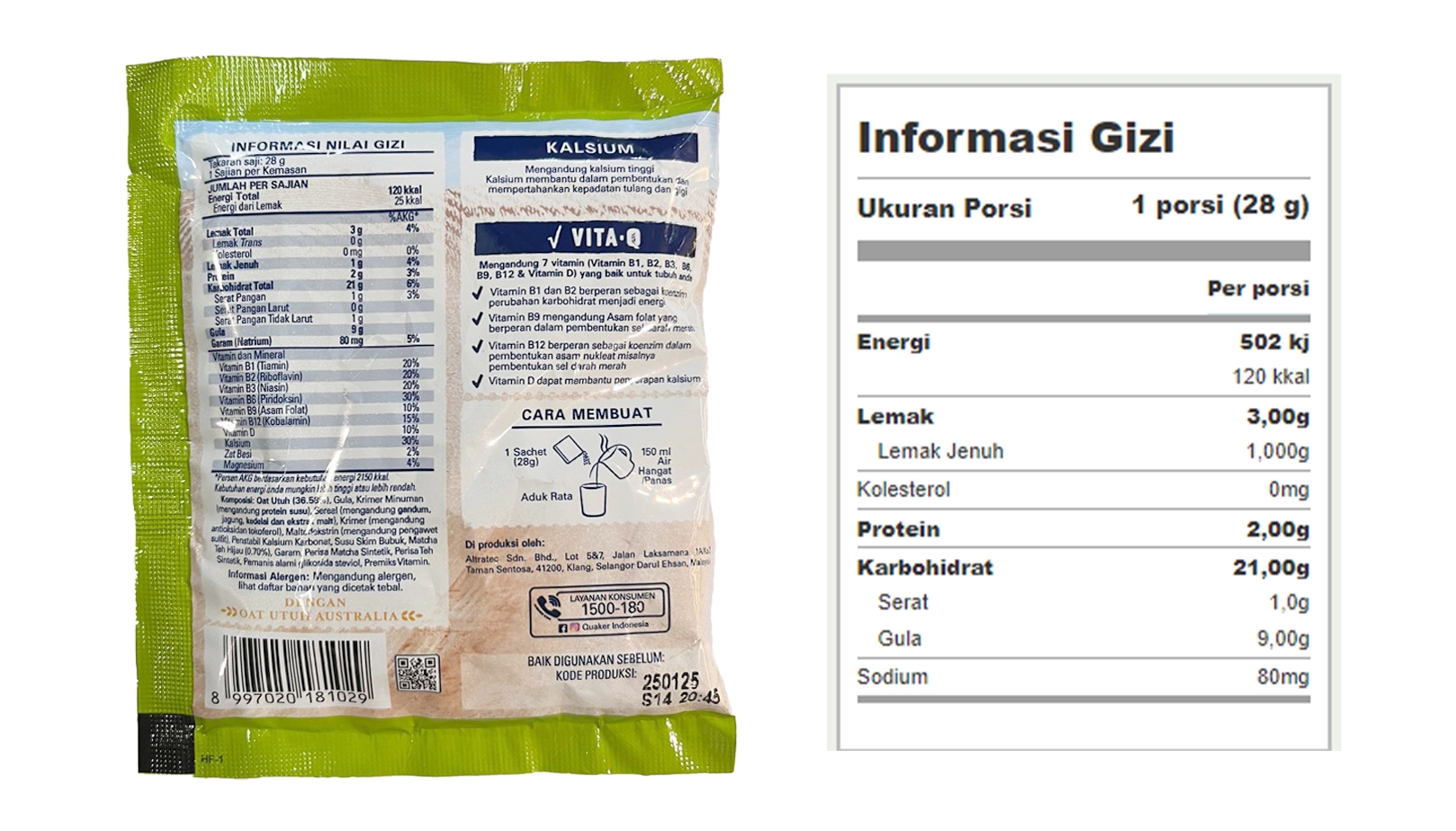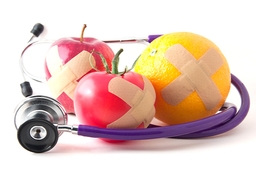How to Read Nutrition Labels

The nutritional information label on food packaging is an essential guide to help you choose products wisely. Understanding this label allows you to find the nutritional content of your food and make healthier daily choices.
Watching a movie at the cinema only feels complete with popcorn and a cold Coke. However, have you ever thought about how many calories it contains? One serving of popcorn (about 100 grams) contains 375 calories! Not to mention, one can of soda measuring 350 ml contains 120-190 calories.
That's just a snack while watching a movie! Imagine if, on the same day, you also enjoyed lunch with fried chicken or drank coffee from your favorite cafe. The average daily calorie need is approximately 2,000 calories. This is why it is critical to understand the nutritional information on each food, exceptionally packaged foods.
Nutrition information labels help us to make more informed product choices and monitor their contents, such as fat, salt, and added sugar. Most packaged foods provide nutritional information on the back or side of the packaging.
You can use it to make healthier and more balanced choices.
Nutritional information usually contains specific details, such as serving size, calories, and other nutritional content, which can help you maintain a healthy diet. So, let's start paying attention to the nutrition labels on your food and making better choices every day!
1. Packaged foods
Serving size per package: 1 serving (28 g)

When reading Nutrition Facts, the first thing to consider is the number of servings per package and the serving size. Serving sizes are standardized to make it easier to compare similar items.
They are displayed in standard units, like cups or pieces, and a metric amount, such as grams (g). Serving sizes reflect the amount typically consumed in a single meal or drink, but they do not represent a recommended serving size.
In the example above, one serving is 28 grams.
It is crucial to remember that not all nutrients are listed on this label, and calories, for example, refer to a specified serving size. Pay attention to the serving size and number of servings in each package to ensure that your consumption is appropriate for your needs.
2. Calories
Calories are referred to as total energy. Total energy includes energy from various sources, including fat. One package contains 120 kcal of calories, with 25 kcal of fat.
Calories tell you how much energy you get from one serving of this item.
To achieve or maintain a healthy weight, you must balance your calorie intake with the calories your body uses. The standard recommendation for average nutritional advice is 2,000 kcal per day for women and 2,500 kcal per day for men. However, calorie needs may differ depending on age, gender, height, weight, and physical activity level.
The number of servings you eat determines the total calories you get. Consuming too many calories per day can increase your risk of being overweight or obese. Balance the number of calories you eat and drink with the number of calories you burn during physical activity.
3. Nutritional content
The Nutritional Content label on the packaging lists key nutrients, such as fat, protein, carbohydrates, sugar, salt, vitamins, calcium, iron, magnesium, and other minerals.
This nutritional content information helps you understand key nutrients that affect your health. You can use this label to support your dietary needs: choose foods rich in the nutrients you want to increase and limit the nutrients you want to reduce.
Nutrients should be consumed more: dietary fiber, vitamin D, calcium, iron, and potassium
Consuming foods rich in dietary fiber can increase the frequency of bowel movements, minimizing the risk of constipation. In addition, fiber-rich diets lower blood glucose and cholesterol levels and reduce calorie intake. Foods high in vitamin D, calcium, iron, and potassium can reduce the risk of osteoporosis, anemia, and hypertension.
Nutrients to cut back on saturated fat, sodium (salt), and added sugar
Saturated fat, sodium (salt), and added sugar are the nutrients listed on labels and are often associated with health risks.
Consuming too much saturated fat and sodium, for example, can increase the risk of cardiovascular disease and hypertension.
Meanwhile, consuming too much added sugar can increase the risk of diabetes.
Choose low-sodium foods. Foods with less than 400 mg per 100 g sodium are good, but less than 120 mg per 100 g are best. The daily recommended limit for sugar, salt, and fat consumption is 50 grams of sugar per day (4 tablespoons), 2,000 mg of sodium or 5 grams of salt (1 teaspoon), and 67 grams of fat (5 tablespoons).
Other salt names that often appear on packaging labels include baking powder, celery salt, garlic salt, meat/yeast extract, monosodium glutamate (MSG), onion salt, rock salt, sea salt, sodium, sodium ascorbate, sodium bicarbonate, sodium nitrate/nitrite, bouillon cube, and vegetable salt.
What are added sugars, and how are they different from total sugars?
Total sugars on the Nutrition Facts label include sugars found naturally in nutritious foods and beverages, such as milk and fruit, and any added sugars in the product.
Added sugars on the Nutrition Facts label include sugars added during food processing (such as sucrose, dextrose, glucose, or maltose), foods packaged as sweeteners (such as table sugar), sugars from syrups and honey, and sugars from fruit or vegetable juices.
Limit your added sugar intake to 10% of your daily calorie needs. That means if your daily calorie needs are 2,000 kcal, the added sugar you can consume is no more than 200 kcal, or the equivalent of 4 tablespoons per person per day or 50 grams per person per day.
4. Recommended Dietary Allowances (RDA)
RDA refers to the number of calories or daily energy the body needs. In Indonesia, the average daily calorie requirement for individuals is 2,100 kcal.
The RDA in nutritional information is presented in percentage form to help you determine whether your nutritional intake is adequate after consuming packaged food.
For example, the cereal drink packaging says it contains 2 grams of protein and a 3% protein content. Consuming one serving of this cereal drink has only met 3% of your daily protein needs.
Remember to check:
- Packaging: Ensure the packaging is good, not damaged, leaking, dented, or rusty.
- Label: read the product information on the label, such as nutritional information, healthier choice logos, health messages, etc.
- Distribution permit: Ensure it has a distribution permit, such as MD, ML, or PIRT.
- Expiration date: make sure it has yet to pass its expiration date.



